Watch this on Rumble: https://rumble.com/v6sr2l5-the-bio-surveillance-trap.html
Breaking News
1. Global Trade War Escalates Amid U.S. Tariffs
President Trump’s “Liberation Day” tariffs have sparked a global trade war, leading to economic instability and market downturns worldwide. The U.S. imposed sweeping tariffs on imports, prompting retaliatory measures from key trading partners, including China. Reuters+6Wikipedia+6Latest news & breaking headlines+6Reuters
Spiritual Implication: This economic nationalism challenges the principles of global unity and cooperation. It serves as a reminder of the spiritual value of interconnectedness and the dangers of divisiveness.
2. China Accelerates Yuan Internationalization
In response to the weakening U.S. dollar, China is promoting the yuan’s global use, expanding its financial influence through currency swaps and digital payment systems. Reuters
Spiritual Implication: The shift in economic power underscores the transient nature of material dominance and the importance of spiritual grounding amidst changing worldly structures.
3. Record-Breaking Heatwave in South Asia
Pakistan faces unprecedented temperatures, potentially reaching 120°F, highlighting the escalating climate crisis. The Washington Post
Spiritual Implication: The extreme weather events call for a collective spiritual awakening to our responsibility as stewards of the Earth, emphasizing compassion and sustainable living.
4. India-Pakistan Border Tensions Rise
Following a deadly terrorist attack in Kashmir, India and Pakistan have engaged in border skirmishes, raising fears of a larger conflict. Wikipedia
Spiritual Implication: The escalation reminds us of the spiritual imperative for peace, reconciliation, and the resolution of conflicts through dialogue and understanding.
5. Pope Francis Passes Away at 88
The death of Pope Francis marks the end of an era for the Catholic Church, prompting reflections on his legacy and the future of the papacy. YouTube
Spiritual Implication: This transition invites introspection on leadership, humility, and the enduring nature of spiritual guidance beyond individual figures.
6. Global Stock Market Crash
The imposition of tariffs and ensuing trade wars have led to a significant downturn in global stock markets, affecting economies worldwide. Wikipedia
Spiritual Implication: The financial instability serves as a reminder of the impermanence of material wealth and the need to find security in spiritual values.
7. Sudan Accuses UAE of Genocide at World Court
Sudan has presented a case against the United Arab Emirates at the International Court of Justice, alleging genocide amid ongoing civil conflict. Democracy Now!
Spiritual Implication: The pursuit of justice on an international stage highlights the universal spiritual principles of accountability, human dignity, and the sanctity of life.
8. Massive Anti-Government Protests in the U.S.
Nationwide protests have erupted in response to President Trump’s policies, reflecting deep political divisions and civil unrest. The Guardian
Spiritual Implication: The civil discord underscores the need for empathy, active listening, and the spiritual practice of seeking common ground amidst diversity.
9. Elon Musk Steps Back from Government Role
Elon Musk has announced his decision to step back from his role in the Trump administration, citing conflicts of interest and public criticism. 92 Q
Spiritual Implication: This move reflects the ethical considerations and spiritual discernment required when balancing personal ambition with public service.
10. Astrological Shifts Signal Transformation
Astrologers note significant planetary movements in April 2025, suggesting a period of transformation and new beginnings. Girl and Her Moon
Spiritual Implication: These celestial events invite individuals to embrace personal growth, spiritual renewal, and alignment with higher purposes.
The Bio-Surveillance Trap
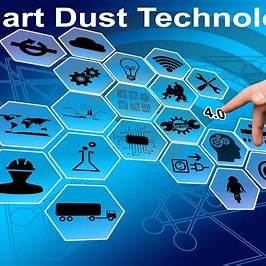

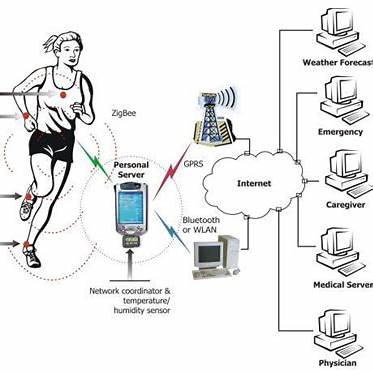
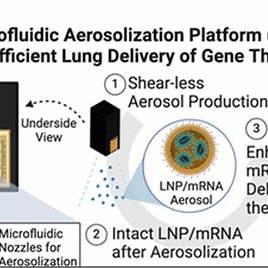
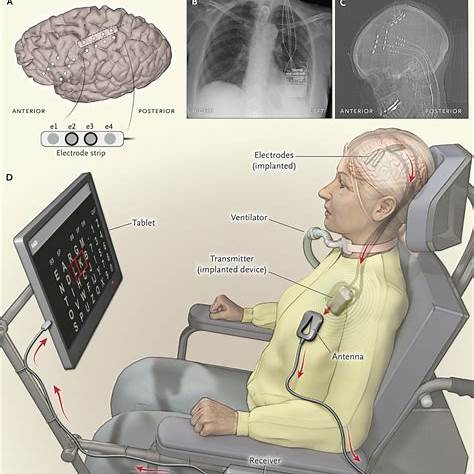

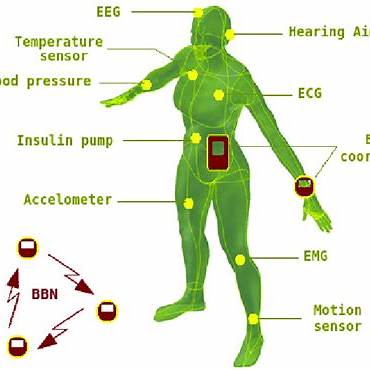
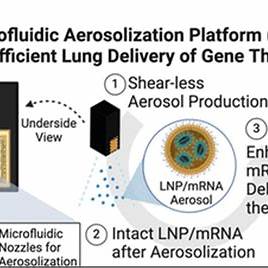
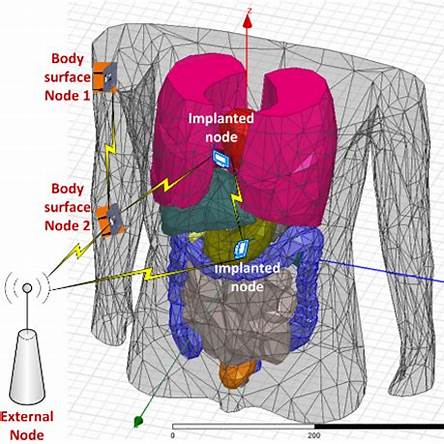


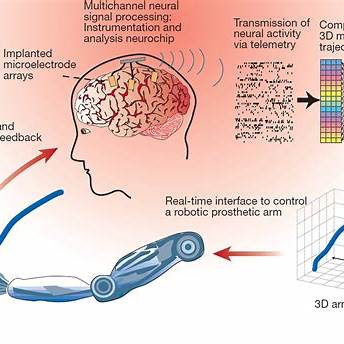


In the hidden corridors of advanced military research, a chilling project has been quietly unfolding under the codename “Project Salad.” According to whistleblower Sabrina Wallace, a former employee of the University of Wisconsin Whitewater and relative of an insider at Shippers Air Force Base, Project Salad involves the covert monitoring and modification of the human body itself. At the core of this operation is the exploitation of the human biofield, often called the “aura” — an electromagnetic field naturally generated by our bodies. Classified under military technologies as a WBAN (Wireless Body Area Network) 802.15.6 protocol, the Department of Defense directive 3000.09 defines the conditions under which autonomous and semi-autonomous weapon systems may engage without human intervention. Hidden within this directive is an implication that WBAN systems are now part of battlefield control measures, suggesting that our own bodies have been quietly transformed into nodes on a militarized network.
Further testimony suggests that an MQ-9 Reaper drone, the very symbol of unmanned precision targeting and remote warfare, has been adapted or tuned to interface directly with the human body’s bioelectrical signals. This drone, it is claimed, can “lock in” to the subtle frequencies of an individual’s biofield—essentially attaching itself at the level of skin, nerves, and bones through these frequency mappings. The goal, according to Wallace’s leaked information, is not merely surveillance, but intervention. In other words, “Project Salad” intends to allow remote systems to “log in” to a human being in real time and potentially alter their biological processes, mental states, and even behavior patterns.
If true, this represents the militarization of the human body itself—the complete erasure of biological privacy, turning living men and women into living operating systems. Such technology would bypass traditional mind control techniques and instead hardwire a backdoor into the temple of human consciousness. No one would know they were being manipulated. No implant would need to be visibly installed. The interface would be through fields, frequencies, and unseen networks above our heads, operated by satellites, drones, and terrestrial antenna arrays linked to AI command systems.
While many may dismiss this as science fiction, it is important to realize that the building blocks for such a system are already publicly known. DARPA’s investments into neurotechnology, the rollout of 6G bio-connectivity proposals, and the DOD’s own open interest in WBAN systems all validate key aspects of this terrifying possibility. Project Salad, if verified, would reveal that the battlefield of the future is no longer merely over physical terrain—it is over the sovereignty of the human soul.
The Patent Trail: Engineering the Human-Digital Interface
The transformation of the human body into a node on a surveillance network isn’t just theoretical—it’s documented in patents and military directives. One such patent, US20120092155A1, outlines a Wireless Body Area Network (WBAN) comprising sensors placed on or within the human body to monitor physiological data. These networks, adhering to the IEEE 802.15.6 standard, facilitate low-power, short-range communication, enabling real-time health monitoring and data collection . Google Patents+2Google Patents+2MDPI+2MDPI+1Wikipedia+1
The Department of Defense’s Directive 3000.09, updated in January 2023, establishes policies for the development and use of autonomous and semi-autonomous weapon systems. While it emphasizes human judgment in the use of force, it also sets guidelines for systems that can operate with varying degrees of autonomy, potentially interfacing with technologies like WBANs for data acquisition and decision-making processes . CSIS+4static.carahsoft.com+4DoD ESD+4ogc.osd.mil+1Wikipedia+1
Further, patent US7673831B2 discusses unmanned aerial vehicle (UAV) systems designed to deploy and tow sensors, enhancing surveillance capabilities. These UAVs can maintain necessary airspeeds while managing sensor positions, allowing for flexible and continuous data collection from various environments . Google Patents+6Google Patents+6Google Patents+6
The MQ-9 Reaper drone, as detailed by the U.S. Air Force, is primarily employed for intelligence collection and dynamic execution targets. Its capabilities include significant loiter time, wide-range sensors, multi-mode communications, and precision weapons, making it a versatile asset in modern warfare and surveillance operations .
The Human Body as a Network Node: The Rise of Smart Dust and Nano-Enabled Surveillance
To convert a human body into a WBAN-compatible node, researchers and defense technologists have explored several delivery mechanisms: injectable nanosensors, aerosolized nanobots, and implantable microdevices. These components act as the hardware layer of a bio-digital interface, enabling real-time data collection, remote control, and potential behavioral modulation.
Smart Dust and Neural Dust: Internal Surveillance Systems
“Smart dust” refers to microelectromechanical systems (MEMS) that are small enough to be injected or implanted into the body. These devices can monitor physiological parameters and communicate wirelessly. Similarly, “neural dust” comprises tiny sensors that can be implanted in the body to monitor nerves, muscles, and organs in real time without the need for batteries. These sensors can also stimulate nerves and muscles, which has potential applications in treating disorders like epilepsy and in stimulating the immune system or reducing inflammation. WIRED+1YouTube+1
Aerosolized Nanobots: Inhalable Surveillance Agents
Aerosolized nanobots are microscopic devices that can be dispersed into the air and inhaled by humans. Once inside the body, they can perform various functions, such as monitoring health parameters or delivering drugs. Their small size allows them to penetrate protective gear and enter unprotected bodily spaces. Futurism+1ResearchGate+1PMC
Vaccines and Nanotechnology: A Convergence
The development of vaccines has increasingly incorporated nanotechnology. For instance, lipid nanoparticles are used to deliver mRNA in COVID-19 vaccines. These nanoparticles facilitate the delivery of genetic material into cells, prompting an immune response. While this technology has been pivotal in vaccine development, it also raises questions about the potential for integrating surveillance capabilities.
Flu Shots and Nanoparticle Delivery Systems
Advancements in flu vaccines have also seen the integration of nanotechnology. Researchers have developed nanoparticle-based flu vaccines that aim to provide broader protection against various influenza strains. These vaccines use nanoparticles to present antigens to the immune system more effectively. While this represents a significant step forward in vaccine efficacy, it also exemplifies the trend of incorporating nanotechnology into medical interventions. AP News+1ScienceDaily+1WIRED+3Phys.org+3ScienceDaily+3
The Implications: Surveillance and Control
The integration of these technologies into the human body paves the way for unprecedented surveillance capabilities. By transforming individuals into nodes within a network, it becomes possible to monitor, and potentially influence, human behavior and physiology remotely. This raises significant ethical and privacy concerns, particularly regarding consent and the potential for misuse.
Neural Interfaces: Reading and Writing Brain Activity
Advancements in brain-computer interfaces (BCIs) have enabled the decoding of neural signals to assist individuals with disabilities. For instance, researchers have developed systems that translate brain signals associated with handwriting into on-screen text, aiding communication for those with paralysis . Similarly, devices like Neuralink’s brain implant have allowed users to control digital devices, such as computers and smart home systems, using their thoughts. WIRED+1Nature+1Nature+1WIRED+1Freethink+8Wikipedia+8Reuters+8
While these technologies primarily focus on reading neural activity, the prospect of writing or injecting information into the brain is an area of ongoing research. The ability to modulate neural activity could, in theory, influence perceptions or behaviors, but the extent and precision of such influence remain subjects of scientific investigation.
Nanotechnology and Neural Modulation
The development of nanoscale devices, such as “neural dust,” presents possibilities for minimally invasive monitoring and potential modulation of neural activity. These tiny sensors can be implanted in the body to record neural signals and, potentially, stimulate nerves and muscles . The wireless nature of these devices, powered by external ultrasound, opens avenues for remote interaction with neural circuits. Wikipediaentefy.com
However, the application of such technologies for direct thought injection or control is speculative and not supported by current empirical evidence. The ethical implications and technical challenges of influencing human cognition through nanotechnology are significant and warrant careful consideration.
Ethical and Societal Considerations
The potential to influence human thought and behavior through technological means raises profound ethical questions. Concerns about privacy, autonomy, and consent are central to the discourse on BCIs and neural modulation. As these technologies evolve, establishing regulatory frameworks and ethical guidelines will be crucial to ensure responsible development and application.
Thermo Fisher Scientific: A Case Study in Private Surveillance Expansion
Thermo Fisher Scientific has been actively expanding its infrastructure, with new facilities dedicated to bioanalytics and data collection. For instance, the company recently opened a new bioanalytical lab in Richmond, Virginia, as part of a nearly $100 million investment to expand its clinical research laboratory operations. These facilities are equipped with advanced technologies capable of collecting and analyzing vast amounts of biological and environmental data. CoStar
One such technology is the Thermo Scientific AerosolSense Sampler, designed to detect in-air pathogens like SARS-CoV-2, influenza, and RSV. This device enables organizations to monitor indoor environments and strengthen facility safety protocols . While beneficial for public health, the deployment of such surveillance tools in various settings raises concerns about the extent of data collection and the potential for misuse. assets.fishersci.com+5Thermo Fisher Scientific – US+5PR Newswire+5PR Newswire+2Lab Manager+2Thermo Fisher Scientific+2
Bypassing Legal Constraints Through Private Entities
Private companies like Thermo Fisher Scientific are not bound by the same legal constraints as government agencies, allowing them to collect and analyze data with fewer restrictions. This dynamic enables the accumulation of sensitive information, such as genetic data, which can then be accessed by governmental bodies without direct oversight or adherence to constitutional protections.
Thermo Fisher’s involvement in controversial data collection practices has been highlighted in reports concerning the sale of DNA collection kits to Chinese authorities. In 2019, the company ceased sales of these kits to police in Xinjiang following reports of mass DNA collection from Uyghur residents. Similarly, in 2023, Thermo Fisher halted sales of its human identification products in Tibet amid concerns over surveillance and human rights abuses . AP News+2Axios+2Wikipedia+2AP News+1Axios+1
The Broader Landscape of Private Surveillance
Thermo Fisher is not alone in this arena. Other private entities are contributing to the expansion of surveillance infrastructure: Inside Precision Medicine
- Palantir Technologies: Provides data analytics platforms to government and commercial clients, facilitating the integration and analysis of vast datasets.
- Clearview AI: Offers facial recognition technology capable of identifying individuals from images scraped from the internet, raising significant privacy concerns.
- Axon Enterprise: Develops law enforcement technologies, including body cameras and data management systems, contributing to the collection and storage of surveillance data.
These companies, operating in the private sector, can develop and deploy surveillance technologies with less public scrutiny and regulatory oversight than governmental agencies.
Implications and the Need for Vigilance
The proliferation of private-sector surveillance infrastructure poses significant challenges to privacy and civil liberties. As these companies expand their reach, often under the auspices of public health and safety, it is crucial to scrutinize their activities and advocate for transparency and accountability.
In towns like mine, the establishment of facilities by companies like Thermo Fisher Scientific warrants attention and inquiry. Brand new buildings since Covid. Community members and local authorities should seek clarity on the nature of data being collected, how it is used, and the measures in place to protect individual privacy rights.
Who Buys This Data?
1. U.S. Government Agencies
Agencies such as the Defense Intelligence Agency (DIA), FBI, and Department of Homeland Security (DHS) have been documented purchasing commercially available data—including location, biometric, and communication records—from private data brokers. This practice allows them to bypass constitutional protections like the Fourth Amendment, which typically require warrants for such data collection. For instance, the DIA has contracted with companies like LexisNexis to access vast datasets without direct oversight. interforinternational.com
2. Data Brokers and Analytics Firms
Companies such as Anomaly Six and Gamma Group specialize in collecting and selling location and surveillance data. Anomaly Six, for example, embeds its software in mobile applications to track users’ movements, selling this information to both government and private clients. Gamma Group’s FinFisher software has been sold to various governments, enabling extensive surveillance capabilities. WIRED+3Wikipedia+3AP News+3Wikipedia
3. Commercial Entities and Advertisers
Beyond government use, commercial entities, including advertisers and insurance companies, purchase personal data to tailor services and marketing strategies. This data can include health information, location history, and online behavior, often collected without explicit user consent.
Thermo Fisher Scientific’s Role
Thermo Fisher Scientific, a prominent player in scientific instrumentation and services, collects extensive biological and environmental data through its products and services. While the company emphasizes its commitment to privacy and data protection, the breadth of data collected raises questions about potential secondary uses and access by third parties. JMP Statistical Discovery
Implications and Concerns
The aggregation and sale of personal data by private entities pose significant risks:
- Privacy Erosion: Individuals often have limited knowledge or control over how their data is collected and used.
- Surveillance Expansion: The availability of detailed personal data facilitates extensive surveillance capabilities for both governments and private organizations.
- Potential for Misuse: Data can be exploited for discriminatory practices, targeted misinformation campaigns, or unauthorized surveillance.
The intersection of private data collection and government surveillance underscores the need for robust data protection regulations and transparency. As private companies continue to amass and monetize personal information, understanding and addressing the implications of these practices is crucial for safeguarding individual privacy and civil liberties.
Conclusion: The Invisible War for the Human Soul
What we are witnessing is nothing short of a technocratic coup against the sanctity of human life. Beneath the surface of progress and public health lies an engineered agenda to digitize, monitor, and ultimately control every human being on this planet. Through mechanisms like smart dust, aerosolized nanotechnology, and injectable bio-electronics, our bodies are being transformed into networked devices—nodes in a global surveillance grid governed not by public servants, but by private, unaccountable powers. The Wireless Body Area Network (WBAN) infrastructure, masked behind health applications and pandemic response, is rapidly becoming the gateway to a new form of slavery—one that doesn’t shackle your limbs but logs into your nervous system and overrides your will.
We’ve seen how private companies like Thermo Fisher Scientific are expanding under the radar in towns across America, building data-collection hubs while bypassing federal constitutional restrictions by remaining outside government jurisdiction. These entities can harvest biological, behavioral, and cognitive data from unaware citizens and sell it to intelligence agencies, multinational corporations, and foreign actors. The very governments sworn to protect us are now outsourcing tyranny to avoid scrutiny, exploiting the loopholes of privatization to deploy tools of absolute control. And we must name it for what it is: experimentation on the human race without informed consent—a clear and grievous crime against humanity.
The health consequences of this synthetic invasion are already manifesting. Metal particulates, silicon circuits, and lipid nanoparticle carriers do not belong inside the human body. These foreign agents can disrupt immune responses, cause neurological dysfunction, and even alter our DNA expression over time. The rise in unexplained autoimmune disorders, cognitive decline, chronic fatigue, and mood instability may not be coincidence, but the slow aftermath of long-term exposure to these embedded technologies. We are being chemically and electrically rewired—without our permission.
But beyond the physical, a deeper truth demands our attention: this is a spiritual war. It is a counterfeit creation—a shadow version of God’s design—constructed by those who believe they can hijack the soul by controlling the body. The elites have built their own Babel, a tower of AI and transhumanism to ascend without God, to bypass the narrow gate and create their own eternal life. But their system is doomed. It is written: “No weapon formed against you shall prosper, and every tongue that rises against you in judgment you shall condemn” (Isaiah 54:17). These weapons—be they silicon chips, neural dust, or drones overhead—may be formed, but they will not triumph against those sealed in the blood of Christ.
Redemption does not come through detox clinics or digital privacy laws—it comes through the power and mercy of Jesus Christ. He is the true firewall. The Creator of your soul does not need to implant anything into your body to track you—He knows every hair on your head. He paid the ultimate price to restore your full humanity, untainted by sin, corruption, or external control. If you feel fear rising, speak His name. If you feel monitored, call out to Him in secret. No satellite can see what the Lord hides in the shadow of His wings.
We must challenge this system not just with facts, but with faith. The fight ahead will require courage, discernment, and unity. Speak the truth boldly, expose the darkness, and call others into the light. For the hour is late, but not lost. The cross still stands, and it stands higher than any antenna, any tower, any drone.
Let them build their machines—we will not bow.
Let them inject their lies—we will not believe them.
Let them track our steps—we will follow the narrow path.
Because in the end, the only signal we answer to is the still small voice of our Shepherd.
And He will not lose a single one.
Sources
Da’at, My brother, good friend and faithful partner.
https://www.tiktok.com/t/ZP8jEgYCJ
1. Transformation of the Human Body into a Wireless Node
The IEEE 802.15.6 standard outlines specifications for Wireless Body Area Networks (WBANs), enabling low-power, short-range wireless communication in, on, or around the human body. These networks are designed for applications such as real-time health monitoring and consumer electronics . Wikipedia
Advancements in nanotechnology have led to the development of “smart dust” and “neural dust”—miniaturized, wireless sensors capable of monitoring physiological parameters. These devices can be powered and communicated with using ultrasonic waves, allowing for deep tissue implantation without the need for batteries . PubMed+1ScienceDirect+1
2. Expansion of Private Surveillance Infrastructure
Companies like Thermo Fisher Scientific have expanded their operations to include facilities equipped with advanced bioanalytics and data collection technologies. For instance, their AerosolSense Sampler is designed to detect airborne pathogens, facilitating environmental surveillance . While these technologies serve public health purposes, they also raise concerns about the extent of data collection and potential privacy implications.
3. Commercialization and Sale of Personal Data
Data brokers operate by collecting, aggregating, and selling personal information, often without individuals’ explicit consent. This data can include location information, health records, and other sensitive details. Government agencies and private entities purchase this data for various purposes, including surveillance and targeted marketing . WIRED
The Consumer Financial Protection Bureau (CFPB) has proposed regulations to limit the sale of Americans’ personal information by data brokers, aiming to enhance privacy protections and prevent misuse . WIRED+3Reuters+3The Verge+3
4. Health Implications of Nanoparticle Exposure
Exposure to metal-based nanoparticles, commonly used in various nanotechnologies, has been linked to several health concerns. These particles can enter the human body through inhalation, ingestion, or dermal contact and have been associated with oxidative stress, inflammation, and potential neurotoxic effects . PMC+2PMC+2PMC+2
Studies have shown that nanoparticles can cross biological barriers, accumulate in organs, and disrupt normal cellular functions, leading to potential long-term health consequences . PMC
5. Ethical Considerations and Human Rights
The integration of surveillance technologies and data collection methods into daily life raises significant ethical questions.The potential for unauthorized monitoring, data breaches, and misuse of personal information underscores the need for robust legal frameworks and oversight to protect individual rights and freedoms.
6. A Call for Awareness and Vigilance
In light of these developments, it is imperative to remain informed and vigilant about the technologies being integrated into our environments and bodies. Engaging in public discourse, advocating for transparent policies, and supporting ethical research practices are essential steps in safeguarding personal autonomy and health.
